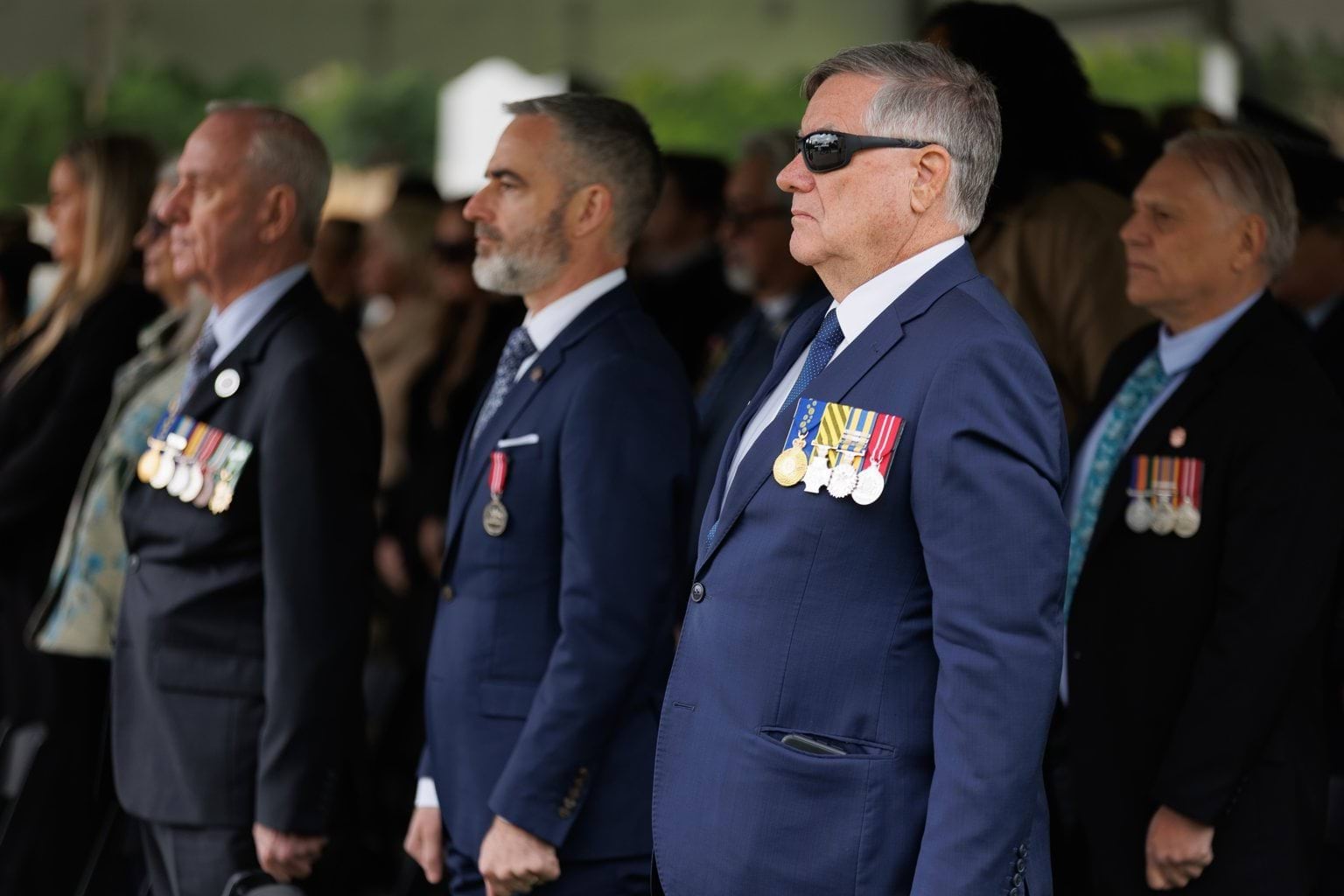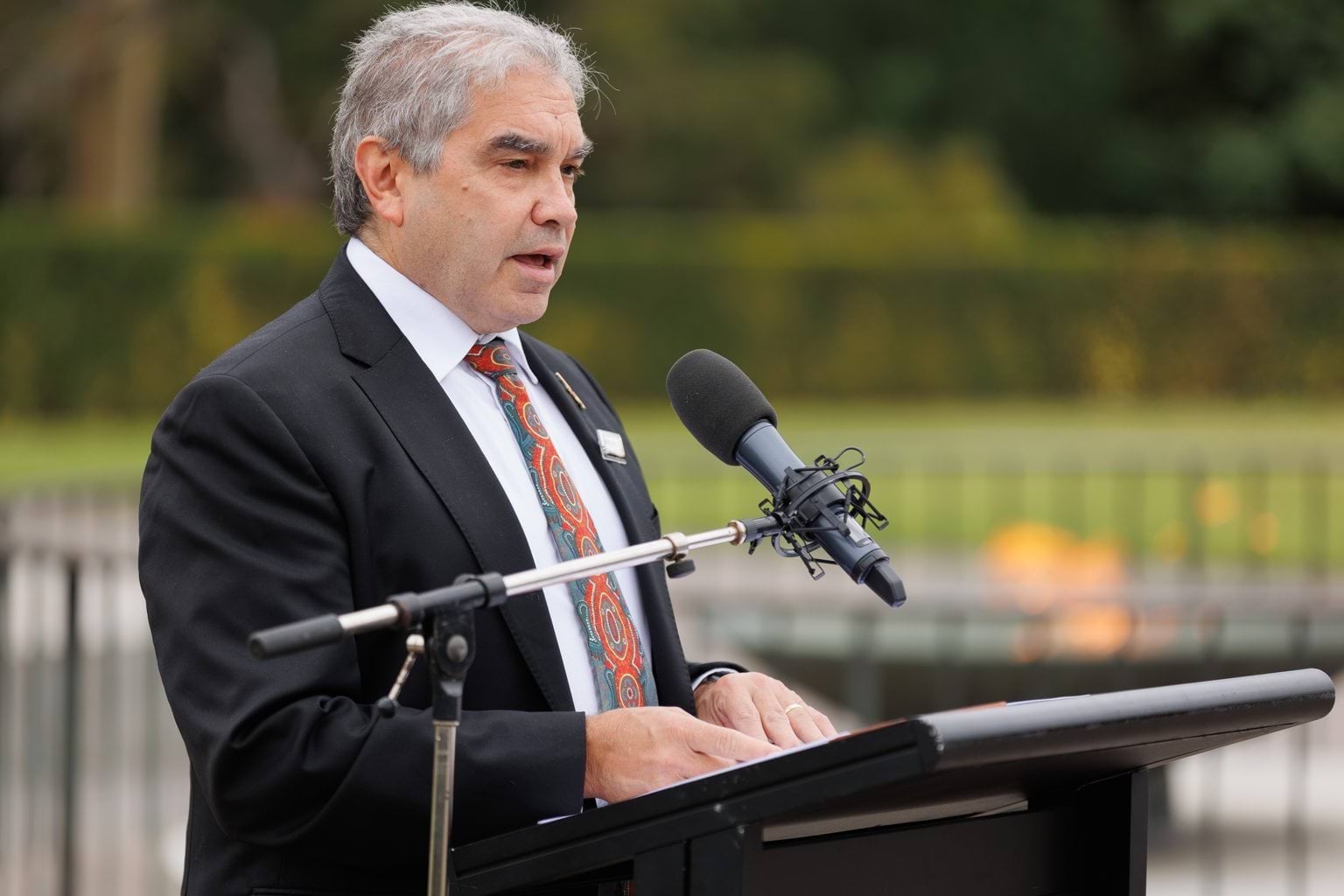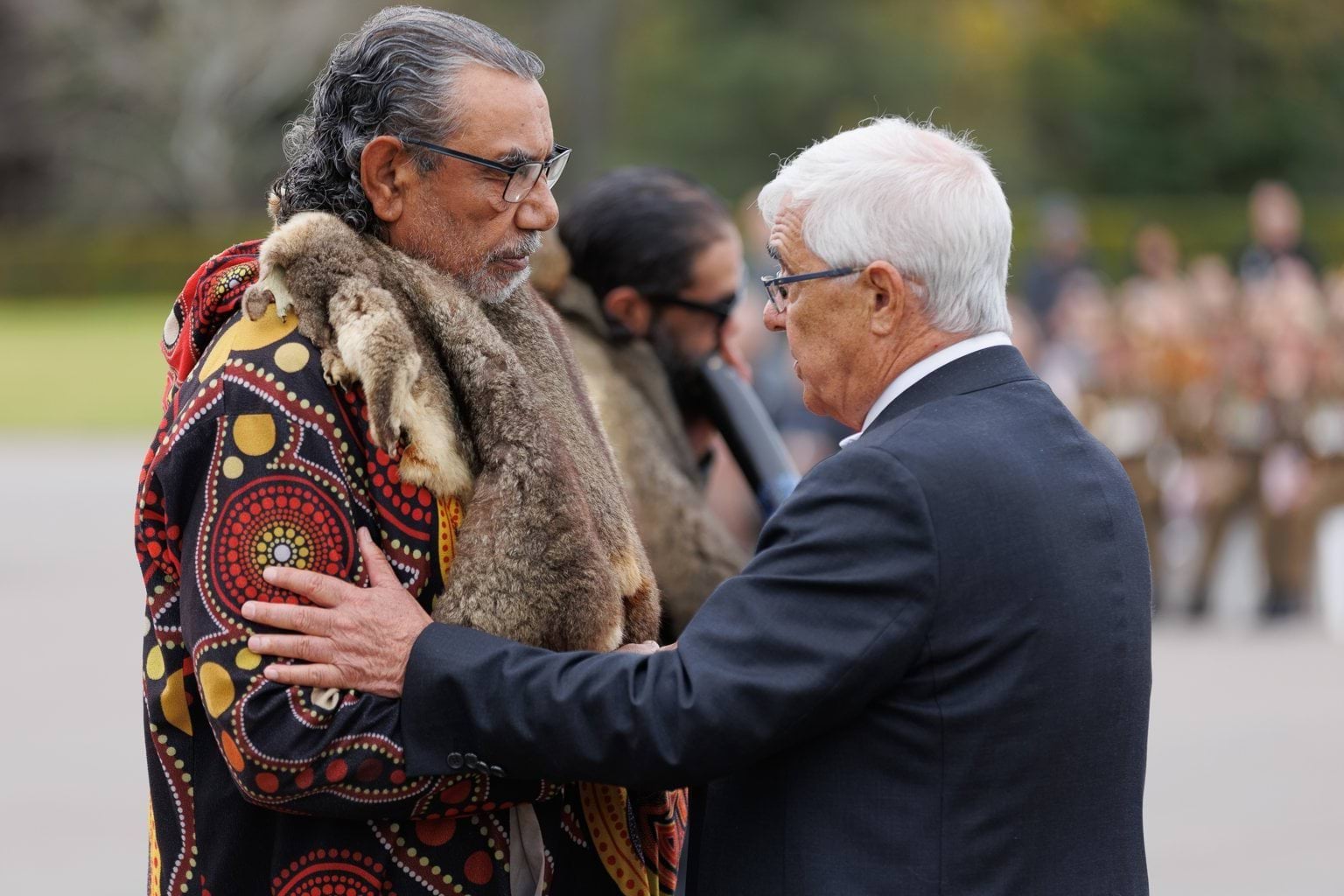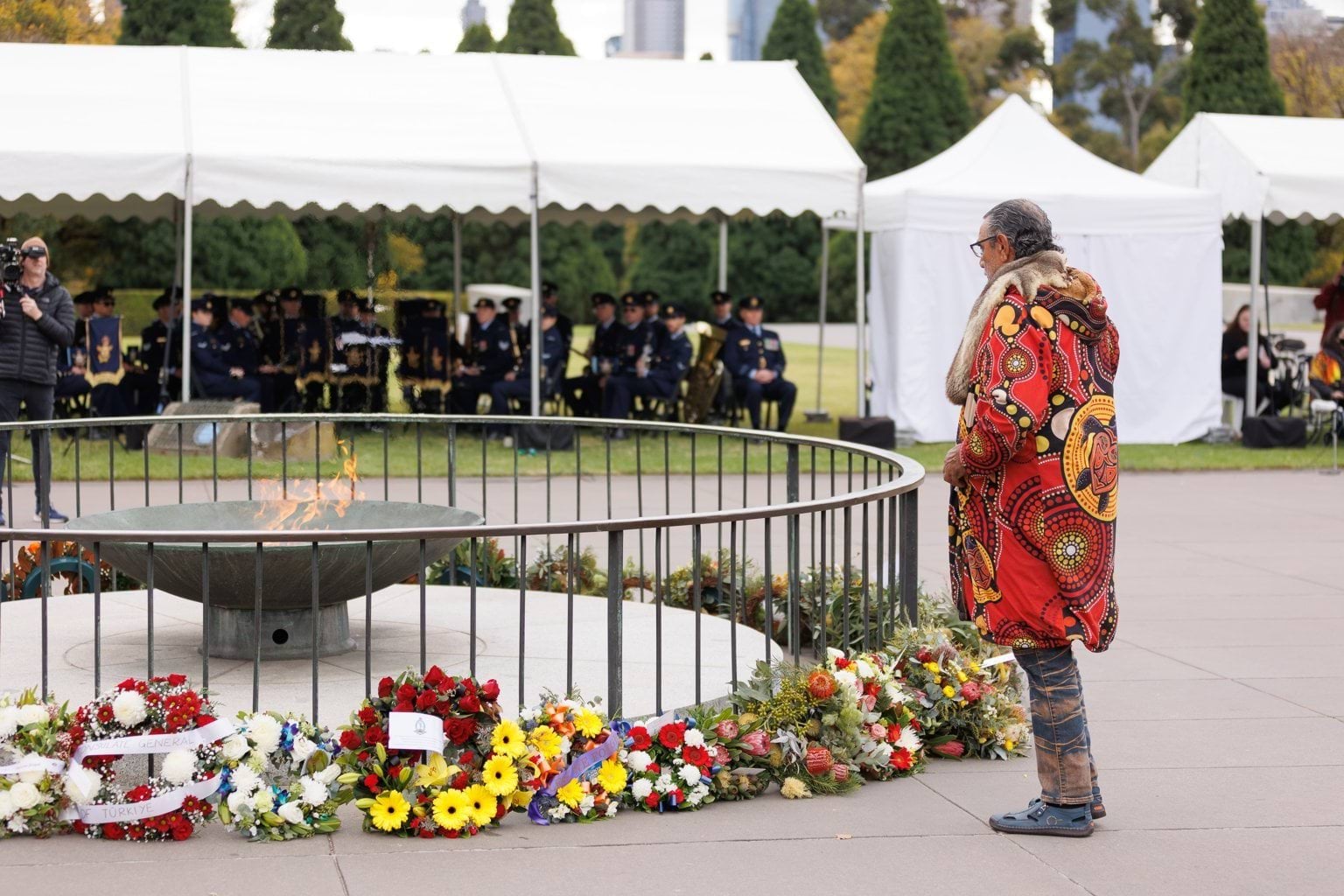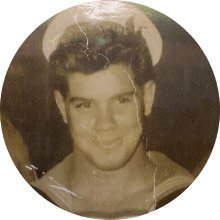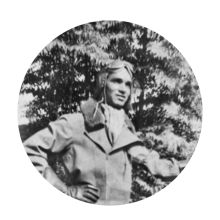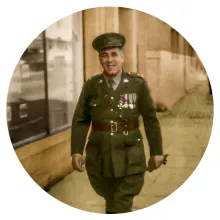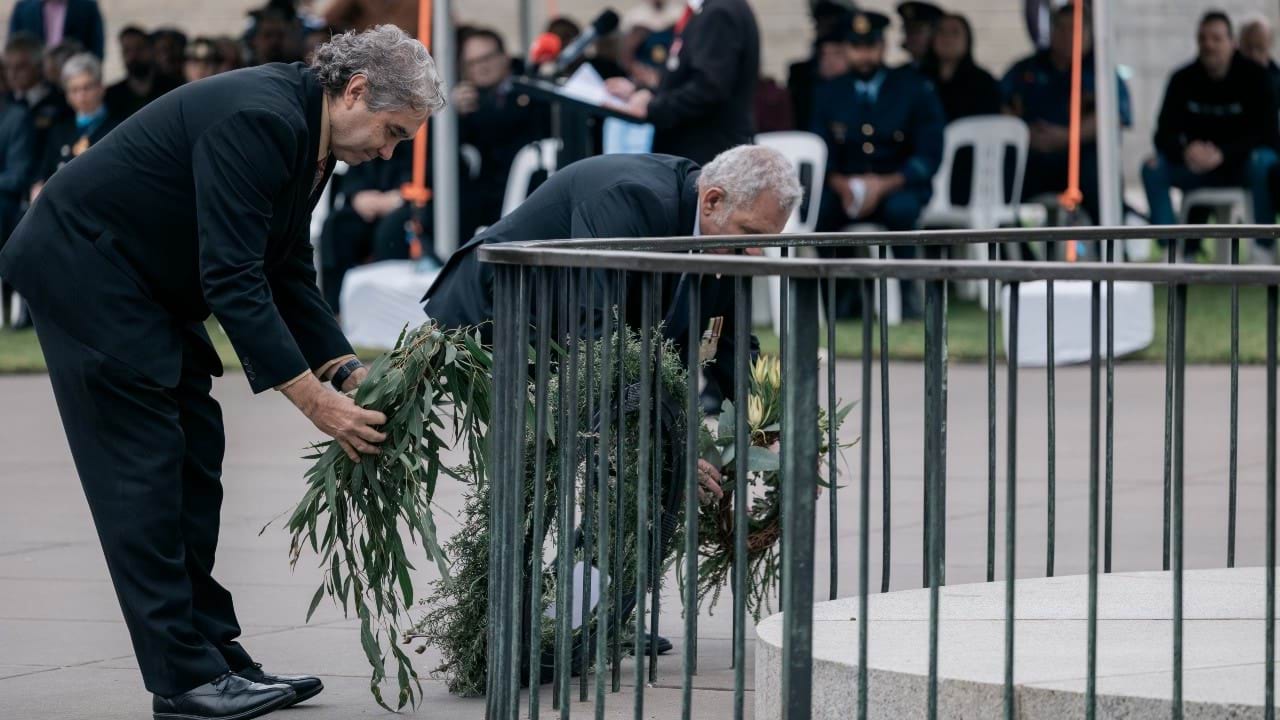About the Victorian Aboriginal Remembrance Service
The service honours First Nations service men and women, who have served, or continue to serve in the Australian Defence Force.
The event is held every year during Reconciliation Week(opens in a new window), on 31 May at the Shrine of Remembrance in Melbourne.
Watch the 2025 Victorian Aboriginal Remembrance Service
The 20th annual service was held at the Shrine of Remembrance on Saturday 31 May at 11.00 am.
A recording is now available below
Remembering Victorian Aboriginal Veterans
Victorian Aboriginal Remembrance Committee
The role of the committee is to provide advice to the Victorian Government on the Victorian Aboriginal Remembrance Service and on issues of First Nations service recognition in Victoria.
Background of the Victorian Aboriginal Remembrance Service
For the last 100 years, First Nations people have served in Australian conflict and peace keeping missions. For many years, the service and sacrifice of First Nations service men and women were not recognised or commemorated.
In 2006, Aunty Dot and Healesville RSL Sub-branch President Sam Halim held a remembrance service to recognise First Nations service men and women. That same year, the Aboriginal flag was raised for the first time at the Shrine of Remembrance in Melbourne.
Victoria was the first state to honour First Nations people who serve and have served with an annual service. Today, most Australian states hold a service. The yearly service gives all Victorians the opportunity to pay their respects during Reconciliation Week. The Victorian Government works with the Victorian Aboriginal Remembrance Committee to deliver the service.
Aunty Dot Peters' Wreath
Aunty Dot Peters AM was a respected First Nations Elder and a descendant of the Yorta Yorta and Yarra Yarra people of Victoria. She raised awareness of issues facing her community and First Nations people in Victoria.
Aunty Dot advocated for the recognition and honour of First Nations service men and women. She was inspired by the legacy of her father, Vincent Peters, who was a prisoner of war and died on the Thai Burma Railway in 1943.
Each year before her passing, Aunty Dot lay a gum leaf wreath at the service. This tradition is now continued by her son, Dr Andrew Peters.
Wreath artwork
Inspired by the wreath laid by Aunty Dot, artist Nina Kelabora created the wreath artwork.
The colours of the leaves are the same as those found in the Aboriginal and Torres Strait Islander flags. The leaves represent the First Nations and non-First Nations service men and women. The individual leaves sit side by side, to represent that all service men and women serve as equals in the Australian Defence Force.
The Ode in Taungurung Language
Translation of the Ode of Remembrance into Taungurung language by Aunty Loraine Padgham.
Updated


